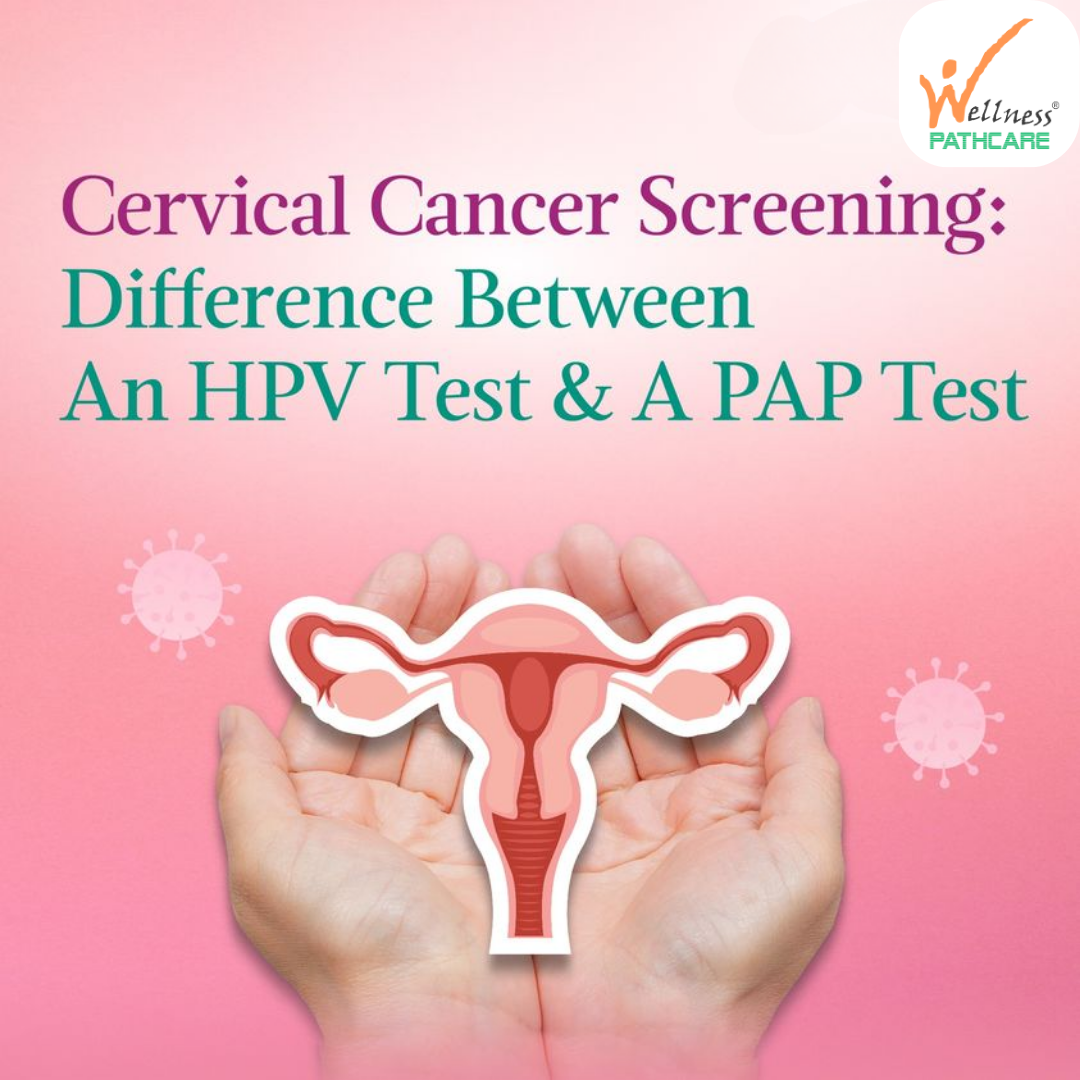Difference Between an HPV Test and PAP Test
Regular cervical screening is believed to be helpful in the prevention of cervical cancer. However, it is pretty standard for many women to be confused between an HPV test and a PAP test. An HPV test is done to detect the presence of an HPV infection (spread from both high-risk as well as low-risk HPV genotypes). Meanwhile, a PAP test looks for abnormal cervical cell growth (precancerous cells—cells that may develop into cervical cancer).
The main difference between HPV & PAP tests is that both may look for contrasting “warning signs” of cervical cancer. In this blog, we’ll discuss these tests. But first, let’s learn about cervical screening.
What Is Cervical Cancer Screening?
Cervical screening is a test that determines whether a patient has malignant (cancerous) cervical cells. It is not used to diagnose cervical cancer but rather to help prevent it. In other words, a screening test aims to find the potential disease even before its symptoms start to show.
The cervical screening process involves looking for abnormal cell growth at the cervix. The lowermost portion of the uterus, the cervix, further opens in the vagina. As part of a routine checkup, women are often advised to undergo cervical screening tests to avoid contracting high-risk HPV (or cancers). Cervical screening is divided into two types: HPV and PAP test.
HPV Test
Human Papillomavirus, or HPV, is among the most common STDs worldwide.
Although HPV affects both men and women, it’s proven to be a leading cause of cervical cancer in females.
HPVs are further divided into two categories-
i. Low-Risk HPVs: These viruses are generally responsible for warts that typically develop around the genitals and anus. However, a low-risk HPV infection could also give rise to warts on arms, legs, hands, feet, etc. These warts, along with the infection, tend to wane on their own without being a health threat.6
ii. High-Risk HPVs: In most cases, the high-risk HPVs go away within a couple of years without any symptoms. However, if an HPV infection persists, it can potentially lead to cervical cancer. High-risk HPVs can also trigger the development of anal, vaginal, mouth, and throat cancer.
An HPV test protects you from the spread of potentially fatal high-risk HPV infections. To check for low-risk HPV, you can examine your skin for warts. However, for detecting high-risk HPV genotypes, you may need to consult a doctor or order LifeCell’s at-home self-collection HPV test kit. This test kit is convenient to use and checks for 24 high-risk HPVs. Amongst these, 3 are major high-risk HPVs (HPV-16, HPV-18 & HPV-45), and the remaining 21 are other high-risk HPVs. If undetected, these HPVs can potentially develop into cervical cancer.
HPV Test Results: What To Expect?
Mentioned below are the result scenarios and what they could mean
A negative test result depicts the absence of high-risk HPV. Sometimes, doctors may ask the patient to get a re-test. However, it is advisable to take the HPV test at a 5-year interval.
A positive test result confirms the presence of high-risk HPV. Though it may not necessarily indicate that the individual has cervical cancer, it indeed increases the risk. Sixth, the doctor may request follow-up tests upon receiving a positive result.
PAP Test
A Pap test helps detect the presence of abnormal cells that can cause cervical cancer. Pap tests are usually done by a doctor or clinician, who collects cells from the cervix and sends them to a lab.
Pap Test Results: What To Expect?
A regular Pap test result means that the patient has no abnormal cells.
An abnormal Pap test result indicates the presence of abnormal cells in the cervix. However, the mere presence of abnormal cells does not confirm cervical cancer. Therefore, the doctor may recommend follow-up tests, monitoring, and treatment.
An unsatisfactory Pap test result indicates insufficient cervical cells in the sample or smear to identify an anomaly.
The only difference between HPV & PAP tests is that one determines the presence of high-risk HPV infection while the latter detects abnormal cervical cells. Even though they go by different names and have distinct procedures, their goal is the same- preventive care from HPV strains that can cause cervical cancer.
Ending Note!
Routine HPV and Pap testing are highly recommended to prevent high-risk HPVs or cervical cancer. Women should consult their gynecologist or consider getting an at-home self-collection HPV Test- Female. We hope that by reading this blog, you have understood the difference between an HPV and a PAP test. So, dear women, say “yes” to a healthy sexual life by taking the HPV test today!

